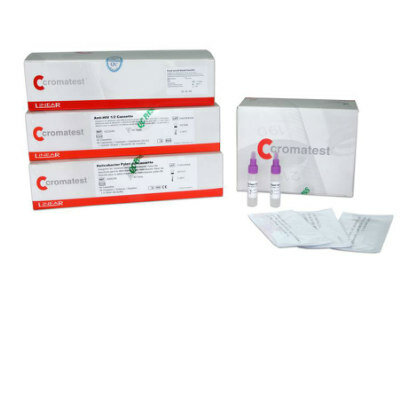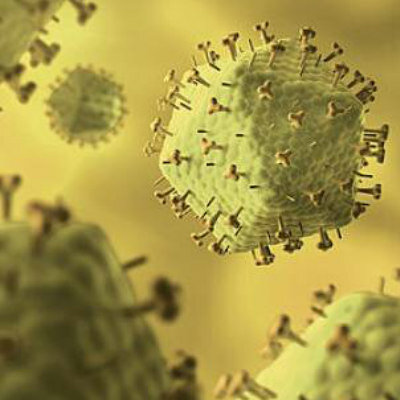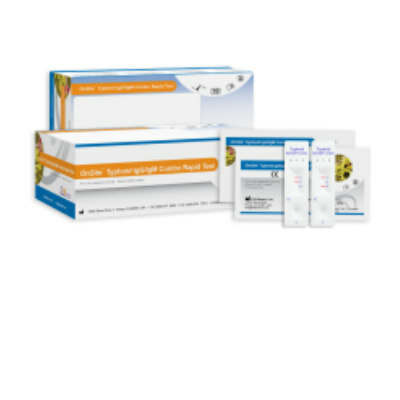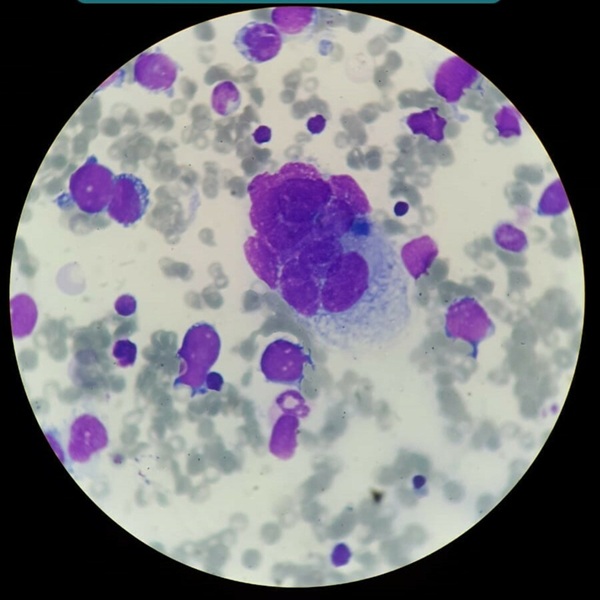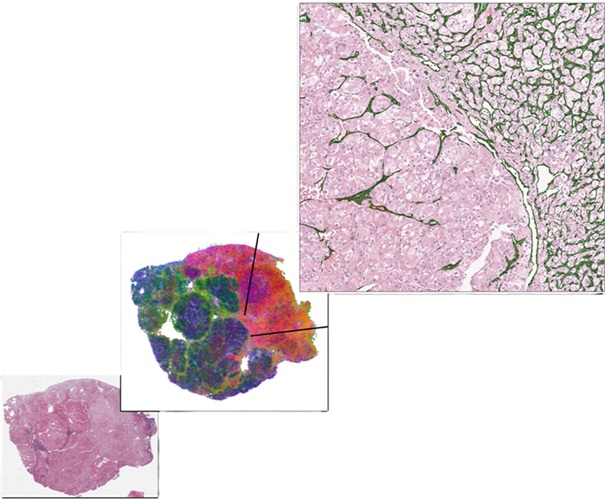New DNA Biosensor Could Make High-Quality Clinical Diagnostics More Accessible
|
By LabMedica International staff writers Posted on 26 Jan 2023 |

DNA can indicate the presence of or predisposition to several diseases, including cancer. By flagging down these signals, known as biomarkers, medical professionals are able to arrive at critical early diagnoses and offer personalized treatments. However, the typical screening methods are often laborious, expensive or uncover limited information. Now, a new biosensor chip featuring an accurate and inexpensive design has the potential to improve accessibility to high-quality diagnostics.
The biosensor, developed by a team of researchers, including from the National Institute of Standards and Technology (NIST, Gaithersburg, MD, USA), identifies biomarkers by measuring how binding occurs between DNA strands and the device. The biosensor differs from other similar sensors mainly due to its modular design, which reduces costs by enabling mass production and reuse of the costliest components. In a study, the team demonstrated the device’s high sensitivity and precision despite its modularity, which is usually associated with diminished performance.
Similar to other DNA biosensors, the new device takes advantage of the fact that a single DNA strand, when not paired with another within the familiar double helix, is primed for chemical bonding. Part of the device is coated with single strands of DNA. When these “probes” encounter DNA biomarkers having a corresponding, or complementary, genetic sequence, the two strands bind, sending a signal that is picked up by the device. When a strand of target DNA binds to a probe, it induces a voltage shift that a semiconductor device, called a field-effect transistor (FET), can measure. Such voltage shifts can happen hundreds of times per second as the molecules pop on and off the sensor. As a result of its high time resolution, the approach can tell whether a DNA strand is bound to a probe, as well as how long it takes to connect and disconnect - a factor called binding kinetics that is vital for discerning various markers that could bind to the same probe to varying degrees. The method also does not need much space to measure a lot.
However, FET-based methods are yet to become mainstream, mainly due to their single-use nature, which until now was viewed as a necessity but pushes up their cost. Similar to how the radio becomes noisier as one drives away from a radio station, electrical signals also become increasingly noisy the longer they travel within electronics. This unwanted random noise that is picked up along the way makes it harder to measure the signal. In order to limit noise, DNA probes in FET-based sensors are usually attached directly to the transistor, which converts the signal into readable data. However, this has a drawback as the probes are spent after being exposed to a sample, along with the entire device. In the new study, the researchers increased the distance between the probes and the transistor to allow for the more expensive elements of the circuitry to be reused. The researchers found that the distance could increase the amount of noise, although they gained a lot from the design choice, in addition of the cost savings.
The researchers had anticipated that the modular design would diminish the biosensor’s sensitivity and took a page out of the Internet of Things (IoT) playbook, which accommodates the losses associated with wireless devices. The team paired the circuitry with a specific type of extremely low-power FET developed at CEA-LETI used in smartwatches, personal assistants and other devices to amplify signals and compensate for the lost sensitivity. The researchers tested the device’s performance by placing it in liquid samples containing DNA strands associated with exposure to harmful ionizing radiation. Complementary DNA probes adorned electrodes wired to the FET. The researchers varied the amount of target DNA across several samples and found that the binding kinetics were sensitive enough to enable accurate measurements even at low concentrations. They found that the performance of the modular design was as good as that of integrated, non-modular FET-based biosensors. The researchers now plan to examine if the sensor can perform similarly with varying DNA sequences due to mutations. Given that several diseases are caused by or associated with mutated DNA, this capability is essential for clinical diagnostics. They also plan to conduct other studies to examine the sensor’s ability to detect genetic material associated with viruses, such as SARS-CoV-2 that causes COVID-19, and could indicate infection.
“There’s an opportunity to develop more sophisticated modular sensors that are much more accessible without sacrificing high quality measurements,” said NIST researcher Arvind Balijepalli, a co-author of the new study.
Related Links:
NIST
Latest Molecular Diagnostics News
- Groundbreaking Molecular Diagnostic Test Accurately Diagnoses Major Genetic Cause of COPD
- First-in-Class Diagnostic Blood Test Detects Axial Spondyloarthritis
- New Molecular Label to Help Develop Simpler and Faster Tuberculosis Tests
- Biomarker Discovery Paves Way for Blood Tests to Detect and Treat Osteoarthritis
- Liquid Biopsy Assay Detects Recurrence in CRC Patients Prior to Imaging
- Ultra Fast Synovial Fluid Test Diagnoses Osteoarthritis and Rheumatoid Arthritis In 10 Minutes
- Genetic-Based Tool Predicts Survival Outcomes of Pancreatic Cancer Patients
- Urine Test Diagnoses Early-Stage Prostate Cancer
- New Genetic Tool Analyzes Umbilical Cord Blood to Predict Future Disease
- Spinal Fluid Biomarker for Parkinson’s Disease Offers Early and Accurate Diagnosis
- Revolutionary Blood Test Detects 30 Different Types of Cancers with 98% Accuracy
- Simple Blood Test Better Predicts Heart Disease Risk
- New Blood Test Detects 12 Common Cancers Before Symptoms Appear
- Blood Test Could Predict Relapse of Autoimmune Blood Vessel Disease
- First-of-its-Kind Blood Test Detects Trauma-Related Diseases
- Key Gene Identified in Common Heart Disease Unlocks Life-Saving Diagnostic Potential
Channels
Clinical Chemistry
view channel
AI-Powered Blood Test Accurately Detects Ovarian Cancer
Ovarian cancer ranks as the fifth leading cause of cancer-related deaths in women, largely due to late-stage diagnoses. Although over 90% of women exhibit symptoms in Stage I, only 20% are diagnosed in... Read more
Automated Decentralized cfDNA NGS Assay Identifies Alterations in Advanced Solid Tumors
Current circulating cell-free DNA (cfDNA) assays are typically centralized, requiring specialized handling and transportation of samples. Introducing a flexible, decentralized sequencing system at the... Read more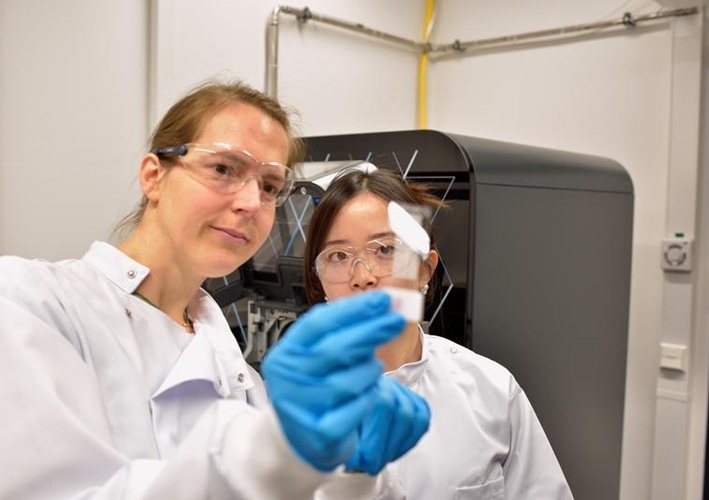
Mass Spectrometry Detects Bacteria Without Time-Consuming Isolation and Multiplication
Speed and accuracy are essential when diagnosing diseases. Traditionally, diagnosing bacterial infections involves the labor-intensive process of isolating pathogens and cultivating bacterial cultures,... Read more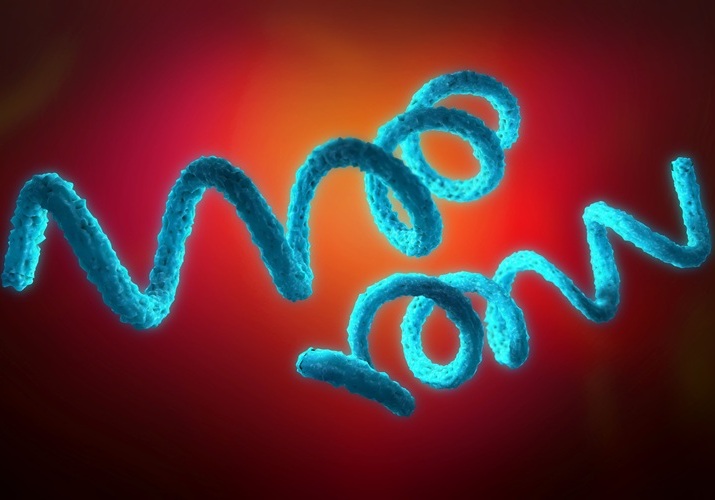
First Comprehensive Syphilis Test to Definitively Diagnose Active Infection In 10 Minutes
In the United States, syphilis cases have surged by nearly 80% from 2018 to 2023, with 209,253 cases recorded in the most recent year of data. Syphilis, which can be transmitted sexually or from mother... Read moreHematology
view channel
First Point-of-Care Heparin Monitoring Test Provides Results in Under 15 Minutes
Heparin dosing requires careful management to avoid both bleeding and clotting complications. In high-risk situations like extracorporeal membrane oxygenation (ECMO), mortality rates can reach about 50%,... Read more
New Scoring System Predicts Risk of Developing Cancer from Common Blood Disorder
Clonal cytopenia of undetermined significance (CCUS) is a blood disorder commonly found in older adults, characterized by mutations in blood cells and a low blood count, but without any obvious cause or... Read moreImmunology
view channel
Stem Cell Test Predicts Treatment Outcome for Patients with Platinum-Resistant Ovarian Cancer
Epithelial ovarian cancer frequently responds to chemotherapy initially, but eventually, the tumor develops resistance to the therapy, leading to regrowth. This resistance is partially due to the activation... Read more
Machine Learning-Enabled Blood Test Predicts Immunotherapy Response in Lymphoma Patients
Chimeric antigen receptor (CAR) T-cell therapy has emerged as one of the most promising recent developments in the treatment of blood cancers. However, over half of non-Hodgkin lymphoma (NHL) patients... Read moreMicrobiology
view channel
Molecular Stool Test Shows Potential for Diagnosing TB in Adults with HIV
Tuberculosis (TB), caused by the bacterium Mycobacterium tuberculosis, led to 1.25 million deaths in 2023, with 13% of those occurring in people living with HIV. The current primary diagnostic method for... Read more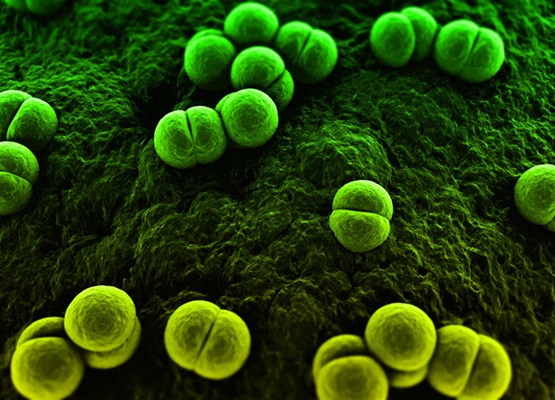
New Test Diagnoses Bacterial Meningitis Quickly and Accurately
Bacterial meningitis is a potentially fatal condition, with one in six patients dying and half of the survivors experiencing lasting symptoms. Therefore, rapid diagnosis and treatment are critical.... Read morePathology
view channel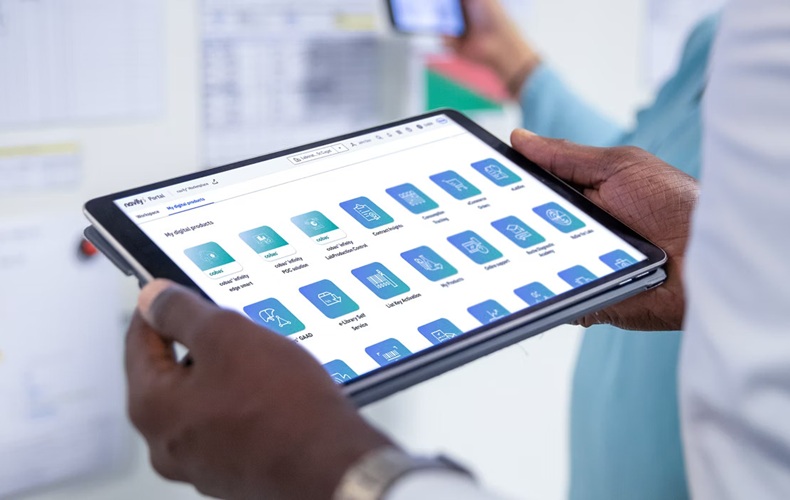
Groundbreaking Chest Pain Triage Algorithm to Transform Cardiac Care
Cardiovascular disease is responsible for a third of all deaths worldwide, and chest pain is the second most common reason for emergency department (ED) visits. With EDs often being some of the busiest... Read more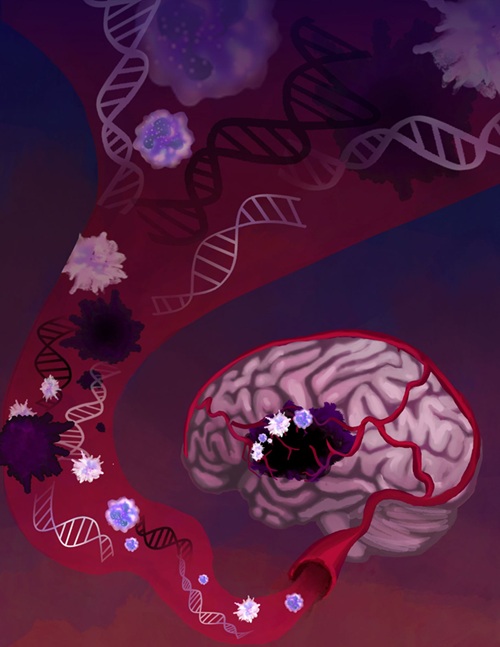
AI-Based Liquid Biopsy Approach to Revolutionize Brain Cancer Detection
Detecting brain cancers remains extremely challenging, with many patients only receiving a diagnosis at later stages after symptoms like headaches, seizures, or cognitive issues appear. Late-stage diagnoses... Read moreTechnology
view channel
Advanced Predictive Algorithms Identify Patients Having Undiagnosed Cancer
Two newly developed advanced predictive algorithms leverage a person’s health conditions and basic blood test results to accurately predict the likelihood of having an undiagnosed cancer, including ch... Read more
Light Signature Algorithm to Enable Faster and More Precise Medical Diagnoses
Every material or molecule interacts with light in a unique way, creating a distinct pattern, much like a fingerprint. Optical spectroscopy, which involves shining a laser on a material and observing how... Read more
Disposable Microchip Technology Could Selectively Detect HIV in Whole Blood Samples
As of the end of 2023, approximately 40 million people globally were living with HIV, and around 630,000 individuals died from AIDS-related illnesses that same year. Despite a substantial decline in deaths... Read more
Pain-On-A-Chip Microfluidic Device Determines Types of Chronic Pain from Blood Samples
Chronic pain is a widespread condition that remains difficult to manage, and existing clinical methods for its treatment rely largely on self-reporting, which can be subjective and especially problematic... Read moreIndustry
view channel
Cepheid and Oxford Nanopore Technologies Partner on Advancing Automated Sequencing-Based Solutions
Cepheid (Sunnyvale, CA, USA), a leading molecular diagnostics company, and Oxford Nanopore Technologies (Oxford, UK), the company behind a new generation of sequencing-based molecular analysis technologies,... Read more
Grifols and Tecan’s IBL Collaborate on Advanced Biomarker Panels
Grifols (Barcelona, Spain), one of the world’s leading producers of plasma-derived medicines and innovative diagnostic solutions, is expanding its offer in clinical diagnostics through a strategic partnership... Read more




